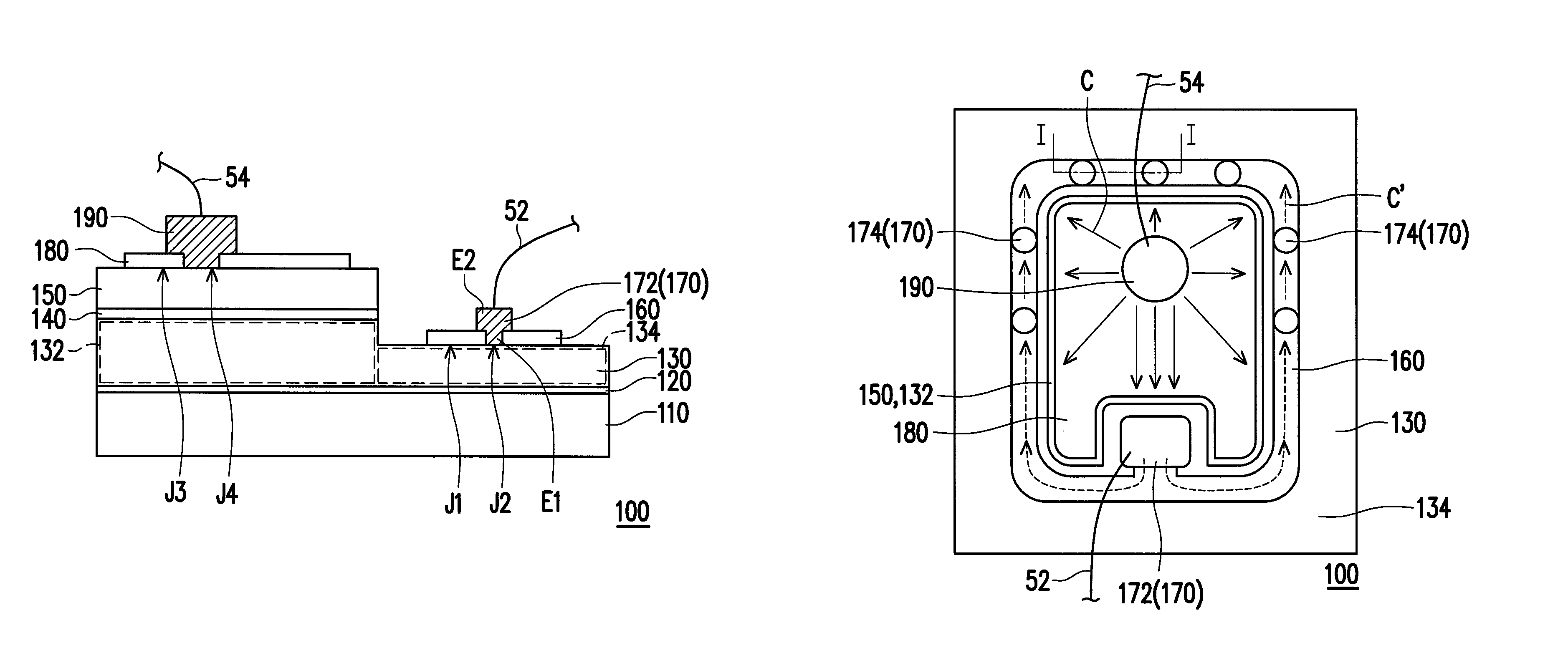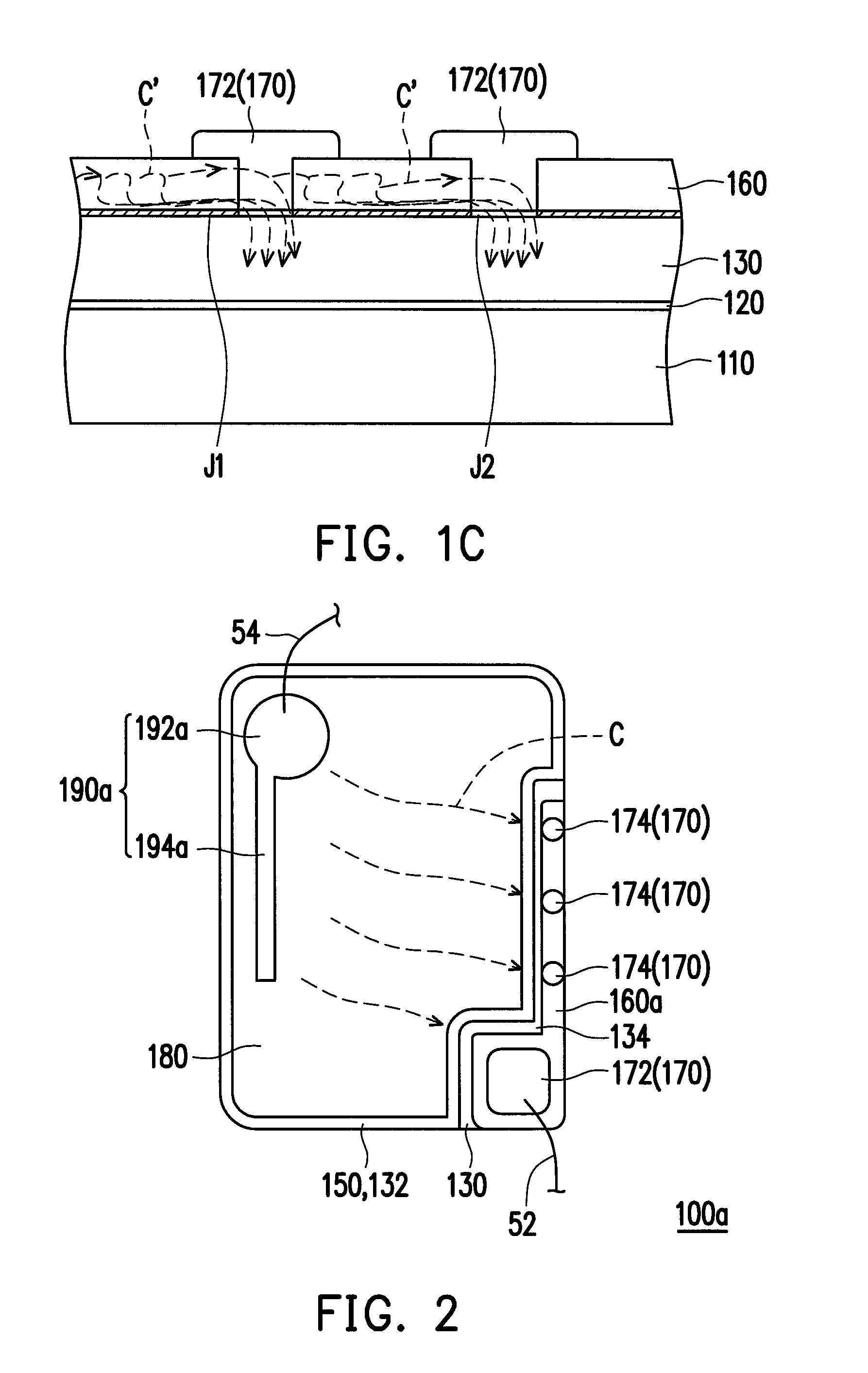Semiconductor light-emitting structure
a technology of semiconductors and light-emitting structures, applied in the direction of semiconductor/solid-state device manufacturing, semiconductor devices, electrical equipment, etc., can solve the problems of reducing the light-emitting layer blocked by the two electrodes, excessive concentration of current flowing from the p-type semiconductor layer to the n-type semiconductor layer in a small area between the two electrodes, and achieving the effect of effective advancing the uniformity of exiting ligh
- Summary
- Abstract
- Description
- Claims
- Application Information
AI Technical Summary
Benefits of technology
Problems solved by technology
Method used
Image
Examples
Embodiment Construction
[0020]FIG. 1A is a cross-sectional schematic diagram of a semiconductor light-emitting structure according to an embodiment of the invention, FIG. 1B is a top-view schematic diagram of the semiconductor light-emitting structure of FIG. 1A and FIG. 1C is a localized cross-sectional schematic diagram of the semiconductor light-emitting structure of FIG. 1B along line I-I. Referring to FIGS. 1A-1C, a semiconductor light-emitting structure 100 of the embodiment is, for example, an LED die structure and includes a first doped type semiconductor layer 130, a light-emitting layer 140, a second doped type semiconductor layer 150, a first electrical transmission layer 160 and at least a first conductor 170 (in the embodiment, it is a plurality of first conductors 170 as an example). The light-emitting layer 140 is disposed over the first doped type semiconductor layer 130 and the second doped type semiconductor layer 150 is disposed over the light-emitting layer 140. In the embodiment, the f...
PUM
 Login to View More
Login to View More Abstract
Description
Claims
Application Information
 Login to View More
Login to View More - R&D
- Intellectual Property
- Life Sciences
- Materials
- Tech Scout
- Unparalleled Data Quality
- Higher Quality Content
- 60% Fewer Hallucinations
Browse by: Latest US Patents, China's latest patents, Technical Efficacy Thesaurus, Application Domain, Technology Topic, Popular Technical Reports.
© 2025 PatSnap. All rights reserved.Legal|Privacy policy|Modern Slavery Act Transparency Statement|Sitemap|About US| Contact US: help@patsnap.com



